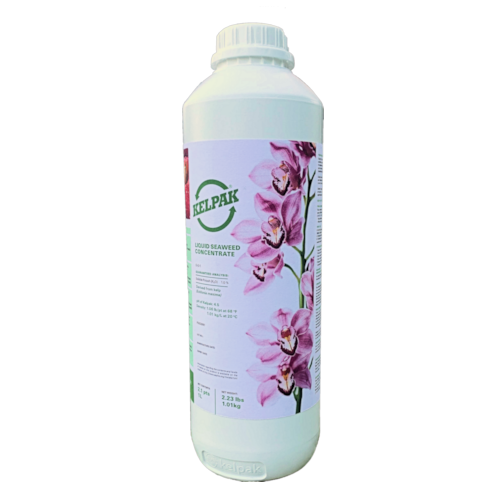
You are aware of my keen interest in the biostimulant, Kelpak. Throughout the 50+ years that I have been involved with orchids, and even longer if we consider tropical houseplants, I have never come across anything better than Kelpak for enhancing plant growth. Regularly supplementing my feeding regimen with Kelpak has made a significant difference to their growth, and has proven to be very effective in “kicking plants into high gear”.
The producer told me-, and I have always shared that it could be mixed with the fertilizer for application or applied independently. As I’ve learned more about how these phytochemicals act on plants, while I continue to support that applying them independently is fine, I am changing my recommendation to “it should be” mixed with fertilizer for application. Here’s why:
Kelpak works in a wide range of ways on plants, but the simplest analogy is that of being a “plant I.V.”. Just as a football player may get a half-time I.V. injection of glucose and electrolytes to enhance his ability to play in the second half, a Kelpak treatment “injects” high levels of many phytochemicals into the plant. They are the same ones the plant normally produces for itself, but by being sourced from the outside, the plant gets the benefits of the high levels without having to expend its resources to produce them. The result; they grow, spread, and perform better overall. It is a reaction that is easily seen within weeks after product is correctly applied. There is a secondary level to this response – or maybe I should say the reason for it – that I have formerly disregarded.
Physiologically, the living, growth, and reproduction in plants is a series of varied phytochemical reactions, controlled by both internal and external stimuli. For example, if there is plenty of water at the root system (external), hormones secreted by the roots (internal) signal the stomata to open, allowing gas exchange to occur, thereby enhancing the collection of carbon from the air. Those processes can be affected by temperature, light levels and duration, and any number of cultural parameters. Another one of those is the supply of nutrient ions.
If we take a moment to think about it, boosting the levels of the growth-regulating phytochemicals within plants is certain to have an effect, but if we simultaneously supply a dose of the nutrient-ion “building blocks” they work on, the result should be even better, and in fact, not only is that true, but biostimulants directly enhance the plants’ uptake of nutrients, as well.
